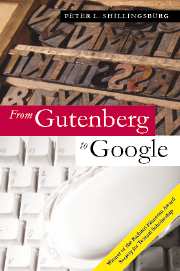Book contents
- Frontmatter
- Contents
- Introduction
- 1 Manuscript, book, and text in the twenty-first century
- 2 Complexity, endurance, accessibility, beauty, sophistication, and scholarship
- 3 Script act theory
- 4 An electronic infrastructure for representing script acts
- 5 Victorian fiction: shapes shaping reading
- 6 The dank cellar of electronic texts
- 7 Negotiating conflicting aims in textual scholarship
- 8 Hagiolatry, cultural engineering, monument building, and other functions of scholarly editing
- 9 The aesthetic object: “the subject of our mirth”
- 10 Ignorance in literary studies
- Bibliography
- Index
9 - The aesthetic object: “the subject of our mirth”
Published online by Cambridge University Press: 23 December 2009
- Frontmatter
- Contents
- Introduction
- 1 Manuscript, book, and text in the twenty-first century
- 2 Complexity, endurance, accessibility, beauty, sophistication, and scholarship
- 3 Script act theory
- 4 An electronic infrastructure for representing script acts
- 5 Victorian fiction: shapes shaping reading
- 6 The dank cellar of electronic texts
- 7 Negotiating conflicting aims in textual scholarship
- 8 Hagiolatry, cultural engineering, monument building, and other functions of scholarly editing
- 9 The aesthetic object: “the subject of our mirth”
- 10 Ignorance in literary studies
- Bibliography
- Index
Summary
In what follows, therefore, I shall be trying to explain why I stand with [Herschel] Parker (and against [G. Thomas] Tanselle) in maintaining the distinction between historical and literary work, and why I support Tanselle (as against Parker) in Tanselle's view of the distinction between private and public documents. My own view of literary work, and hence of how to go about editing it, rests on this pair of distinctions. Furthermore, the distinctions highlight the centrality of literary texts for understanding the textual condition.
Jerome McGann, The Textual Condition (1991)Still, after years of regular exchanges at conferences on German editorial problems and theories and in the pages of journals of textual scholarship like editio and TEXT, there remain misunderstandings (which is unfortunate) and disagreements (which may be inevitable) between Anglo-American editors and German (and other continental) editors about certain key issues in the production of Historical-Critical Editions, or Scholarly Editions, as they are known to Anglo-American scholars. In general terms the misunderstandings and disagreements seem to focus on the goals of scholarly editing and the concepts of authorization. At the core of the difficulty is, I believe, the distinction between the textual artifact and what Gunter Martens has called the “aesthetic object” – between physical documents and the art that they witness or represent. This distinction was discussed briefly in the previous chapter; here it forms a background to explorations of other distinctions leading to disagreements over theory and practice in scholarly editing.
- Type
- Chapter
- Information
- From Gutenberg to GoogleElectronic Representations of Literary Texts, pp. 173 - 188Publisher: Cambridge University PressPrint publication year: 2006



